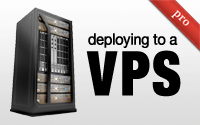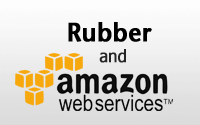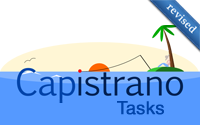Categories
- Active Record
- Active Resource
- Active Support
- Administration
- Ajax
- APIs
- Authentication
- Authorization
- Background Jobs
- Caching
- Code Walkthrough
- Controllers
- Debugging
- Deployment
- eCommerce
- Forms
- Mailing
- Models
- Performance
- Plugins
- Production
- Rack
- Rails 2.0
- Rails 2.1
- Rails 2.2
- Rails 2.3
- Rails 3.0
- Rails 3.1
- Rails 3.2
- Rails 4.0
- Refactoring
- Routing
- Search
- Security
- Testing
- Tools
- Views
Deploying to a VPS
Deploying a Rails application can be overwhelming because there are so many different options. Here I present a pattern for deploying a Rails app to a VPS using nginx, Unicorn, PostgreSQL, rbenv and more.
(18 minutes)
Trinidad
Trinidad is designed to serve JRuby web applications and gives you the power of Java while still keeping the feel of traditional Rails deployment. Here I show how to setup a Capistrano recipe, configure it, and more.
(15 minutes)
Monit
Monit can help ensure your Rails app stays up and running smoothly. Here I show how to set it up, receive alerts, and keep tabs on it through a web interface.
(16 minutes)
Rubber and Amazon EC2
Deploying to Amazon EC2 allows you to scale an application quickly. Learn how to use Rubber to deploy to the cloud with just a few commands and monitor the cluster with various web tools.
(17 minutes)
Zero-Downtime Deployment
Here I show how to accomplish zero-downtime deployment using Unicorn. I also cover gotchas when working with migrations and how to put up a maintenance page when you do need to take down the site.
(12 minutes)
Facebook Open Graph
This episode builds on last week's episodes and shows how to integrate Facebook further through the Open Graph protocol. You will also learn how to tunnel your local server and move Facebook communication into a background process.
(11 minutes)
Chef Solo Basics
Chef is a provisioning tool which allows you to spin up production servers automatically. Here I show how to get started with Chef Solo and create a custom cookbook.
(17 minutes)
Capistrano Tasks (revised)
Learn the basics of writing Capistrano tasks, how to set variables, and run commands on a remote server. Then peak into the internals of Capistrano's deploy tasks to see how they work.
(10 minutes)
Asset Pipeline in Production
The Asset Pipeline is very useful, but it can be a pain in production. Here I show why it works the way it does, and how to customize it to fit your deployment setup.
(13 minutes)
Rollout and Degrade
Learn how to use the Rollout gem to deploy a feature to a select group of users and the Degrade gem to automatically disable it upon failure. Also included is a way of doing this from scratch.
(13 minutes)










